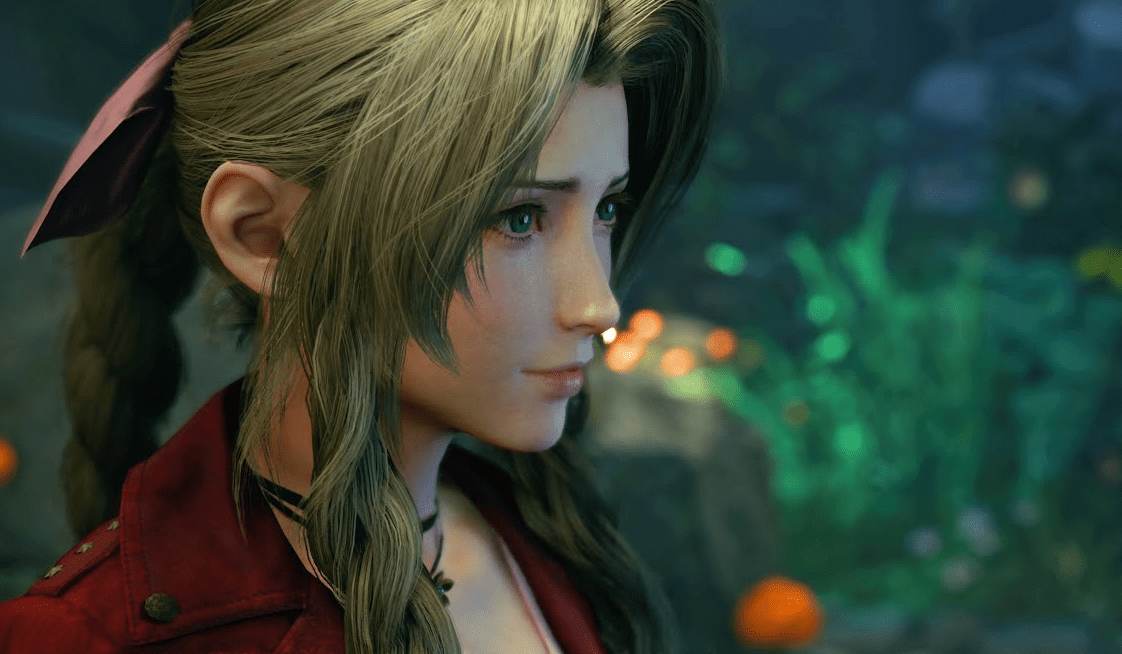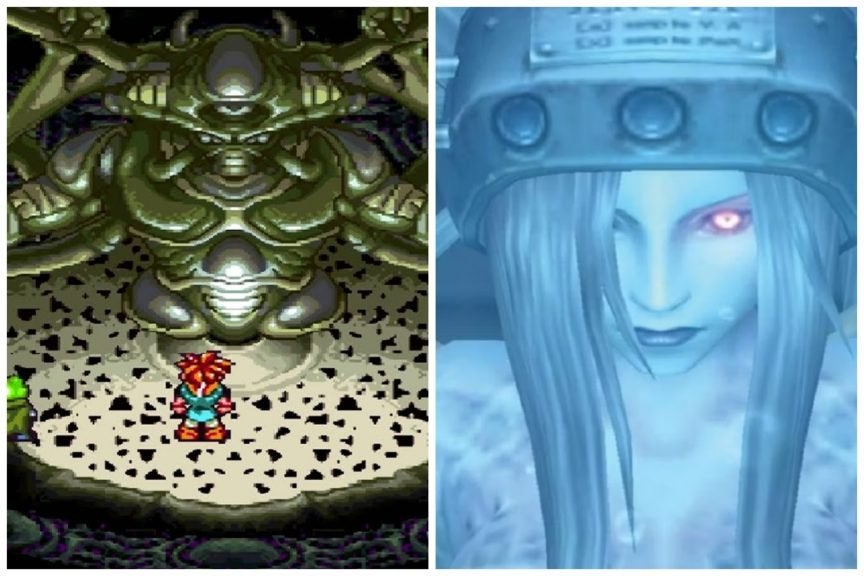![]() Key Takeaway
Key Takeaway
Final Fantasy games are hotbeds for fan speculation. Certain fan theories have persisted over years and even decades, with the following being some of the most widely believed in the fandom.
- The three faces of Eve trope is real
- Biggs and Wedge from Chrono Trigger are the same characters in the Final Fantasy universe
- Aerith knew she was going to die (Final Fantasy VII)
- Ozma is an Eidolon (Final Fantasy IX)
- Hydaelyn is a hub and the 13 reflections of the source represent the previous 13 games in the Final Fantasy series (Final Fantasy XIV)
- Final Fantasy X and Final Fantasy VII are connected
- Jenova from Final Fantasy VII and Lavos from Chrono Trigger are the same species
The Final Fantasy franchise has been around for nearly 40 years, and fan theories almost as long. Boasting 16 main entries and countless spin-offs, there’s no shortage of lore to dissect. Certain theories have persisted, causing many to believe them true—even if Square Enix hasn’t confirmed any.
Table Of Contents
The Three Faces of Eve Trope Is Purposeful

In media, the Three Faces of Eve trope features a trio of women, each with a different personality and purpose in the group. This includes the Wife, who is calm and reliable; the Seductress, who is sexy and independent; and the Child, who is playful and innocent.
The Three Faces of Eve trope can be found in dozens of video games, from the Persona series to Bioware’s Dragon Age games. In the Final Fantasy franchise, this trifecta can be found in more than one mainline title. In Final Fantasy X-2 (pictured above), Yuna represents the calm Wife, Paine represents the sassy Seductress, and Rikku represents the wacky Child.
When we look at Final Fantasy VII, things aren’t as clear-cut as you might expect—Tifa, despite looking like the Seductress, is the most level-headed of the group, instead representing the Wife. Aerith, who looks the part of a homemaker, is the most assertive and street-smart, making her the Seductress. Yuffie’s role as the Child is much more obvious.
Some players believe the inclusion of the trope is purely coincidental. Still, it can be found in Final Fantasy IV, Final Fantasy V, Final Fantasy VI, Final Fantasy VIII, Final Fantasy X, Final Fantasy XII, and Final Fantasy XIII. It’s hard not to believe that the creators aren’t doing it on purpose at this point.
Biggs and Wedge From Chrono Trigger Are the Same Characters in the Final Fantasy Universe

Although the characters Biggs and Wedge can now be found in many Final Fantasy titles, their first appearance in the series came in 1994’s Final Fantasy VI. Only briefly available for players to control, the pair of soldiers help Terra Branford on her raid of the city of Narshe. Unfortunately, they are quickly eviscerated in a beam of light by Valigarmanda, a powerful esper.
In the 1995 Super Nintendo title Chrono Trigger, two soldiers named Biggs and Wedge appear as employees in Norstein Bekkler’s Tent of Horrors. Shortly after the game’s release, an issue of V-Jump in Japan laughably claimed that after the pair disappeared in Final Fantasy VI, they ended up in the Chrono Trigger dimension, where Norstein gave them new employment.
While this theory seems less likely now that Biggs and Wedge have appeared in many other mainline titles, similar to the character Cid, it’s never been outright denied by developers. Maybe there was some truth to this hypothesis back in the mid-90s.
Aerith Knew She Was Going to Die (Final Fantasy VII)

Aerith’s death by Sephiroth’s hand remains one of the most notable events in all of gaming, shocking audiences even more when they realized the healer couldn’t be resurrected. The game’s director, Tetsuya Nomura, said that “death should be something sudden and unexpected,” taking extra caution to make Aerith a fan favorite before her untimely demise.
As time has passed, many fans have started to wonder whether Aerith was completely aware of her sad fate when stopping to pray in the City of the Ancients.
When in Cosmo Canyon, Bugenhagen notes that one must pray for Holy and return to the lifestream to activate it and save the planet. Although the events of Meteor aren’t clear in this part of the story, once Aerith became aware of Sephiroth’s intentions, she may have accepted that death was her only choice if she wanted to keep the world safe.
Ozma Is an Eidolon (Final Fantasy IX)

In Final Fantasy IX, Eidolons are summoned monsters brought forth by the summoner tribe of Madain Sari. Born from Gaia’s crystal and formed of memories, they are powerful guardians capable of terrible destruction.
Ozma is an optional superboss in the game that can only be reached by completing a lengthy sidequest titled ‘Chocobo Hot and Cold.’ Despite its somewhat bland appearance as a simple floating ball, Ozma is one of the strongest enemies in Final Fantasy IX, causing many players to speculate about what the sphere could possibly be.
For years, the leading hypothesis has been that Ozma is actually an Eidolon that has been forgotten by the masses, causing its form to deteriorate into nothing more than a colorful blob of energy. This theory is supported by the fact that the boss itself is found inside an “Eidolon cave” in Chocobo’s Air Garden.
When defeated, Ozma also drops a Pumice, which can teach Dagger the Ark summon, adding even more credibility to this proposition.
Hydaelyn Is a Hub and the 13 Reflections of the Source Represent the Previous 13 Games in the Final Fantasy Series (Final Fantasy XIV)

The lore of Final Fantasy XIV is particularly complex. Spanning five expansions, the long-running MMO has over 400 hours of main story content alone, with hundreds of hours of bonus lore found in job and side quests. The game also features cameos and locations from other entries in the Final Fantasy universe, but given the immensity of the story and the dev team’s meticulous attention to detail, some have begun to wonder if this is more than just fan service.
In the game, players find themselves on the planet Hydaelyn, also called The Source. Long ago, an event called the Sundering occurred, splitting the Source into thirteen shards spread across the universe. Many fans find the number thirteen strange, as it is the number of mainline Final Fantasy titles to come before Final Fantasy XIV.
Naoki Yoshida, the game’s producer, hasn’t commented on this somewhat obscure fan theory. For now, it’s fun to imagine that every Final Fantasy world is represented by one of these shards.
Final Fantasy X and Final Fantasy VII Are Connected

While it may not seem so with a cursory glance, Final Fantasy VII and Final Fantasy X share similar themes. Though their worlds are vastly different, some evidence can be found to posturize the games are, at least, loosely connected.
In Final Fantasy VII, the Lifestream holds the energy of all life found on the planet. Then consider that in Final Fantasy X, the Farplane is where the souls of the departed dwell, which also appear within the living world as Pyreflies.
In Final Fantasy X-2, players are introduced to a character named Shinra, a name that will instantly be recognizable to Final Fantasy VII fans. While this may seem like a small detail, Yoshinori Kitase, the director of both games, didn’t outright dismiss the connection in an interview with Kotaku in 2017.
“I won’t completely come out and say that it is the same world. However, Shinra in FFX-2 was created by Kazushige Nojima, the scenario writer, and when he thought him up, he thought it might be good if people would imagine that after a few years after the story of Final Fantasy X-2, that person Shinra would grow up and start the Shinra company. So that is something that he did hint in there. That being said, I’m not gonna say that it’s the same.”
Jenova From Final Fantasy VII and Lavos From Chrono Trigger Are the Same Species

Square Enix was on a roll in the 90s, churning out hit after hit. Both Chrono Trigger and Final Fantasy VII were in development by the studio at the same time, making any accidental similarities more understandable. That hasn’t stopped many fans from speculating that one particular detail was more purposeful.
Both Jenova from Final Fantasy VII and Lavos from Chrono Trigger are villainous extraterrestrial life forms that crash-landed on their respective planets. They both feed off of the energy of the planet and move to a new planet once their sustenance dries up. Some fans have also noted that Jenova’s final form, Jenova-SYNTHESIS, has a spiky back reminiscent of Lavos’ shell.
The evidence is strong, though the developers have never explicitly confirmed that the pair are the same species.
Even if the above theories are proven false, they show the boundless creativity the Final Fantasy series can inspire in people. Its characters and themes are inspirational enough, but combining them with often ambiguous endings and plot threads is the perfect recipe for constant speculation. If any of the above theories are proven true, we’ll be sure to post an update. In the meantime, there are plenty of glitches to find.


